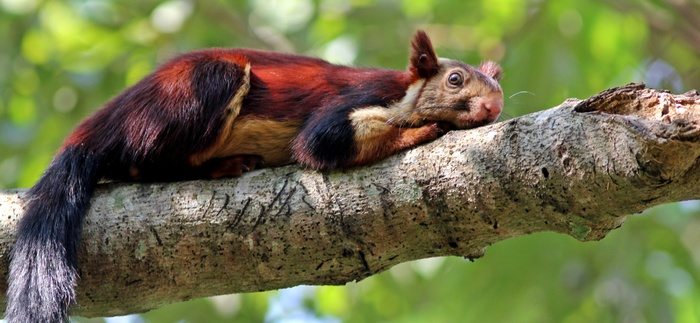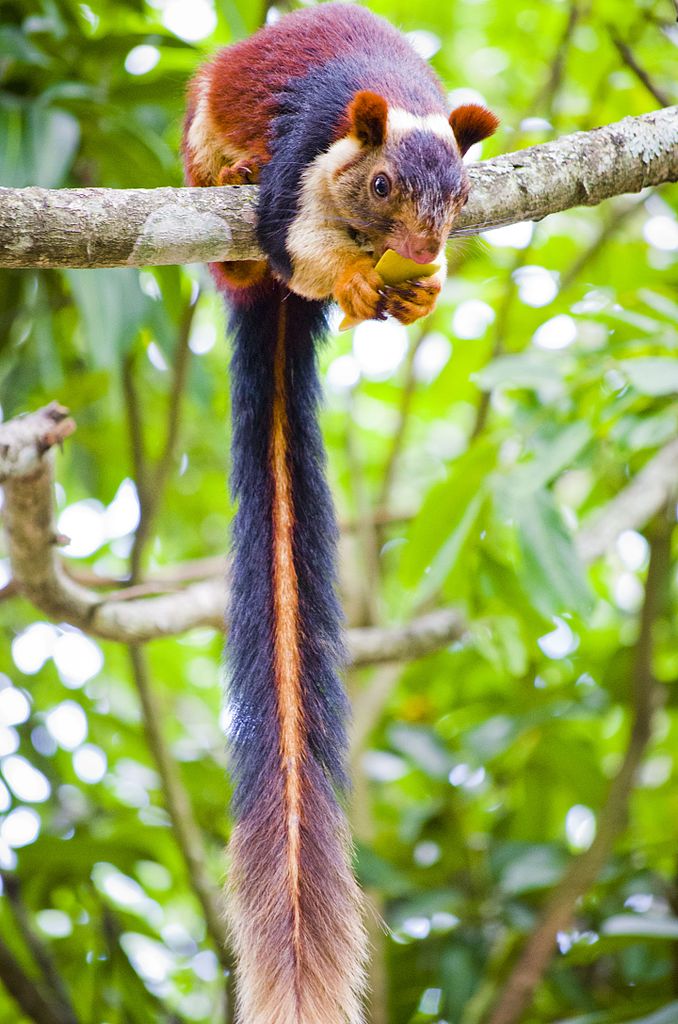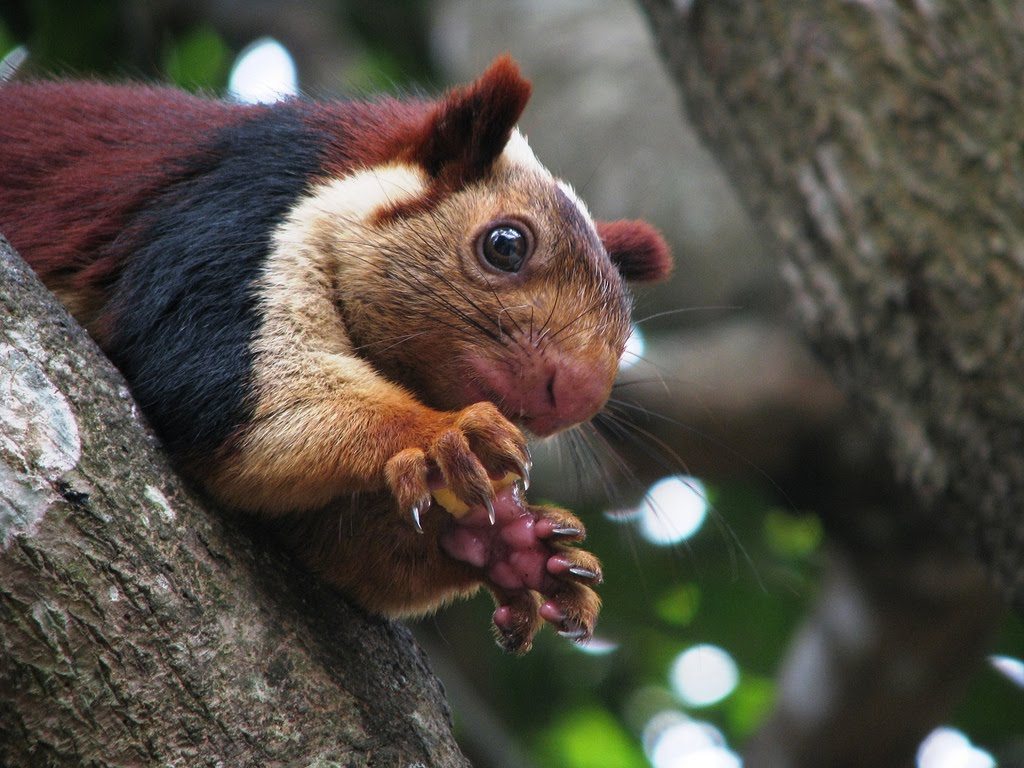Have you ever heard of John Koprowski? Neither had I, but as it turns out, he really has something amazing to bring to the world. He is a squirrel expert (yes, it is a real thing) and he introduced me to the Malabar giant squirrel. This animal, that also goes by the name of an Indian giant squirrel, is so amazing that you probably won’t believe what you are seeing. It even surprised him when he saw one the first time!
It was back in 2006 that John was visiting India and he saw this animal that looked more like a primate than a squirrel. It is perhaps because of the impressive size of the animal that makes it look more like a primate. In reality, it is a squirrel but it is an extremely larger squirrel. They can grow up to 36 inches long. In other words, they are twice as large as an Eastern gray squirrel!

“These are giants!” Koprowski, professor and associate director at the School of Natural Resources and the Environment at the University of Arizona said.
Not only is this squirrel huge, they are also beautifully colored. The fur coat can range in a variety of colors including orange, black, purple and brown. This is a rather rare site for a mammal but this squirrel does it in style.

These bright colors are more than something beautiful to look at. They help the squirrel survive.
“In the shaded understory of a dense forest, the patchy colors and dark hues are a great adaptation to avoiding detection,” Koprowski said. “But when you see these in the sunlight, they show their ‘true colors’ and beautiful pelage [fur]

The squirrel eats a diet of fruit, nuts, flowers and tree bark. There are even some that are omnivorous, also eating birds eggs and insects. They are adorable and the tuft of hair on their ears really makes them stand out.

Malabar giant squirrels spend the majority of their time in the forest canopy, jumping from one tree to the other. They can make jumps of up to 20 feet and they rarely ever hit the ground. It is rare to see one of the squirrels in the wild. Not only do you have to travel to Eastern or southern India, you have to head deep into the forest.
“They are pretty shy,” Pizza Ka Yee Chow, squirrel expert and research fellow at Hokkaido University, told The Dodo. “One of my friends who lives in India shared with me that the best way to see these giant squirrels is to climb up on a tree, stay very quiet and wait for them to emerge from their [nest].”
These animals aren’t in danger of going extinct but they do need to be protected.

According to the International Union for the conservation of nature, the squirrel it is on a list of “least concern.” The population is on the decline but certain laws need to be enacted to protect the species.
“The real threat is the slow loss and degradation of forested habitats as humans move in and as climate change impacts higher elevation areas,” Koprowski said. “The good news is that they have a wide distribution and seem to tolerate human presence and even some modest level of low-density housing.”

Making more people aware of the species can also help.
“They’re part of a group of squirrels that is pretty ancient,” Koprowski said. “They’re a unique evolutionary group that’s been here a long time, which is a good thing.”
